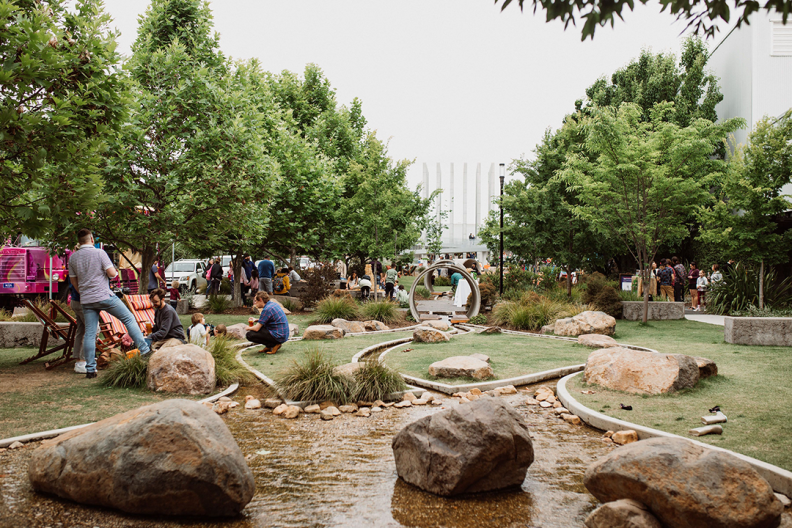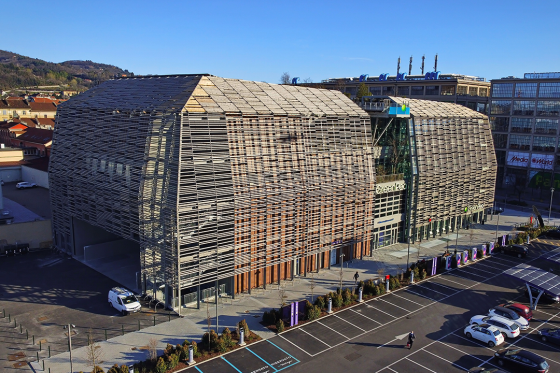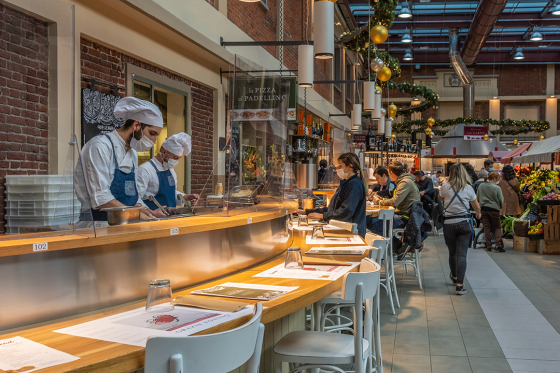This article was first published in SCN Vol. 41 No. 1, 2023 Big Guns.
Changing the character of a space is nothing new to the shopping centre industry. For years we’ve changed what’s in the centre court; we’ve changed outdoor spaces, converted former department stores into specialty shops and so on. This article discusses how sport and other ‘activities’ will transform spaces...
As Australia ramps up to host the 2026 Commonwealth Games in Melbourne and the 2032 Olympics in Brisbane, new and existing multi-city sports infrastructure will cater for athletes competing and millions of spectators watching on the world stage.
But what will happen to these spaces afterwards? And how can we learn from them to create healthy and thriving communities for the future? The answers may lie in an integrated approach that blends uses and sees our major retail spaces playing a key role in an important legacy opportunity.
Looking back
During the past few years, the demise of retail giants Myer, David Jones and other notable discount department stores have left cavernous, empty spaces within shopping centres throughout the country. But shopping centre owners bounced back, galvanising their remaining retail offerings to remain commercially viable.
Indeed, diversified mixed-use has flourished. Nowadays, local shopping centres are one-stop hubs showcasing commercial, tourism, residential, education and urban development products, and are evolving into fully-fledged mini-cities. Think hotels, such as at Chadstone – The Fashion Capital and urban farming rooftops such as Burwood Brickworks (both in located in Melbourne), vertical schools in shopping centres, and Sydney’s Marrickville Metro, as an example of adaptive reuse (former industrial space) and authentic retail at the heart of an emerging mixed-use and lifestyle precinct.

Centres such as the Grounds of Alexandria in Sydney are diversified experiential offerings – not just retail and transactional. The Custard Factory in Birmingham in the United Kingdom created affordable space for social cultural and entertainment activities by day and night. This development literally transformed a once derelict part of the city.
Dairy Road Canberra is also great new retail/art/food/entertainment district of note. The former government education and training centre is being transformed into one of Australia’s most dynamic retail precincts, based around the idea of curated experiences and creative industries. Future stages are expected to include commercial and residential developments by globally recognised architects such as David Chipperfield. Curation of events and developing stronger links to the community are important outcomes, supported by the integration of alternate uses such as sport or culture. The authenticity of community-based activity builds on the experience, as does the backdrop of the location’s sporting, artistic and cultural elements, plus the social history often found in the regeneration of industrial or heritage buildings.



A developing trend
Now, there’s a developing trend – sporting activities co-located within shopping centres. Offering leisure activities such as basketball courts, running tracks and urban gardening, people of all ages and abilities can use formerly occupied stores and space in ways they’ve never been used before. We particularly like the running tracks on shopping centre rooftops, such as in Thailand and Japan’s Osaka Air Track.
Back in 1984, we saw existing precincts revitalised with a disbursed Olympics program as part of the Los Angeles Olympics. This was a deliberate attempt to use investment in sport, retail and transport infrastructure to renew the city more holistically.
Closer to home, Westfield Knox in Melbourne transformed opportune spaces to deliver basketball courts, a swim centre, event space and short-term commercial accommodation. Likewise, the old Myer space has been transformed into a community, commercial and retail hub.
But more than this, sport and leisure deliver intangible benefits such as improved physical and mental wellbeing and social connection. As a result, these spaces have a positive impact on the community – as well as centre owners – by bringing people from all walks of life together.
Co-locating sports infrastructure with other community amenities offers more uses for the same space at different times of the day – for everyone to see the benefits and expand the time spent by visitors across the asset.

Shifting to lifestyle-based transactions
What’s interesting is the shift from shoppers consuming and taking away products to them actually giving back through lifestyle participation and experience transactions. Shoppers today and into the future will continue to buy based on brand equity, not disposable culture. So, heading to the shopping centre to partake in a sports event extends the values of supporting brands and delivers Environmental Social Governance (ESG) commitments and a social purpose – all of which the modern shopping centre now delivers.
For example, the world’s first green retail park, Green Pea in Turin, Italy has a net zero commitment where all retailers must meet stringent ESG credentials ranging from their line of products to their shop fit-out. In Australia, we’ve got a lot to catch up on; however, there’s no doubt businesses with a strong ESG commitment, net zero agreement, or carbon policies will drive the next generation.


A transformative future
As shoppers seek to contribute to the world in meaningful ways while managing their own needs, such as health, wellbeing and financial security, the opportunity now is for owners of large retail spaces to consider the integration of uses. Think free access facilities like community playing courts, health programs for older patrons or even developmental play spaces for children, utilising an adaptive approach to space.
For both the 2026 Commonwealth Games in Melbourne and the 2032 Olympics in Brisbane, the legacy we leave behind will be key and has been flagged already as an important factor in these events. Creating a stronger, healthier and more connected community will be a large focus, with the owners of our major shopping centres in a prime position to play a part in this vision.
In China, for example, entire cities are developed concurrently, creating instant liveability and infrastructure to make them work; however, they are not necessarily integrated. While such a model is not necessarily viable in Australia, the opportunity to leverage this unique window in the lead-up to these events by adopting an adaptive use of space and achieving potentially greater occupancy is evident.
Creating thriving communities
It’s worth recognising that both Games are not too far off and shopping centres must continue to evolve. Innovations in technology, such as the Internet of Things (IoT) and ChatGPT, mean consumers are engaging with content and platforms in more diverse ways and seeking more individualised ways to connect to ‘choose their own adventure’. This may be a simple way of integrating and leveraging off the Games, but we could possibly go further.
This may translate to innovative strategies in broadcasting the Games, hosting ‘Have a Go’ events along the ‘Green and Gold Runway’ as part of the lead up, or consuming on a hand-held device inside shopping centres. We may also start to see virtual games immersion opportunities for fans using new augmented reality, multi-sensory content and gaming solutions, as the shopping centre has an opportunity to play a central role in acknowledging the link. Seeking new ways to promote greater participation through sport will support healthy communities who can also shop, learn, work, heal and grow old in one place together. Shopping centres will continue to evolve and the opportunity to be direct partners to the Games is a very exciting prospect.
The time is now
Never before have we seen so much change in our world. As the Games get closer and we as a society continue to evolve at an ever-increasing rate, we now have a unique moment in time for shopping centre owners to take innovation by the hand and approach the use of space in a truly adaptive, transformative way. By being bold and assigning new values to past traditional retail spaces, we may rewrite history once again and create a truly community-based legacy for years to come.






